Build Progress - 05/23 (2)
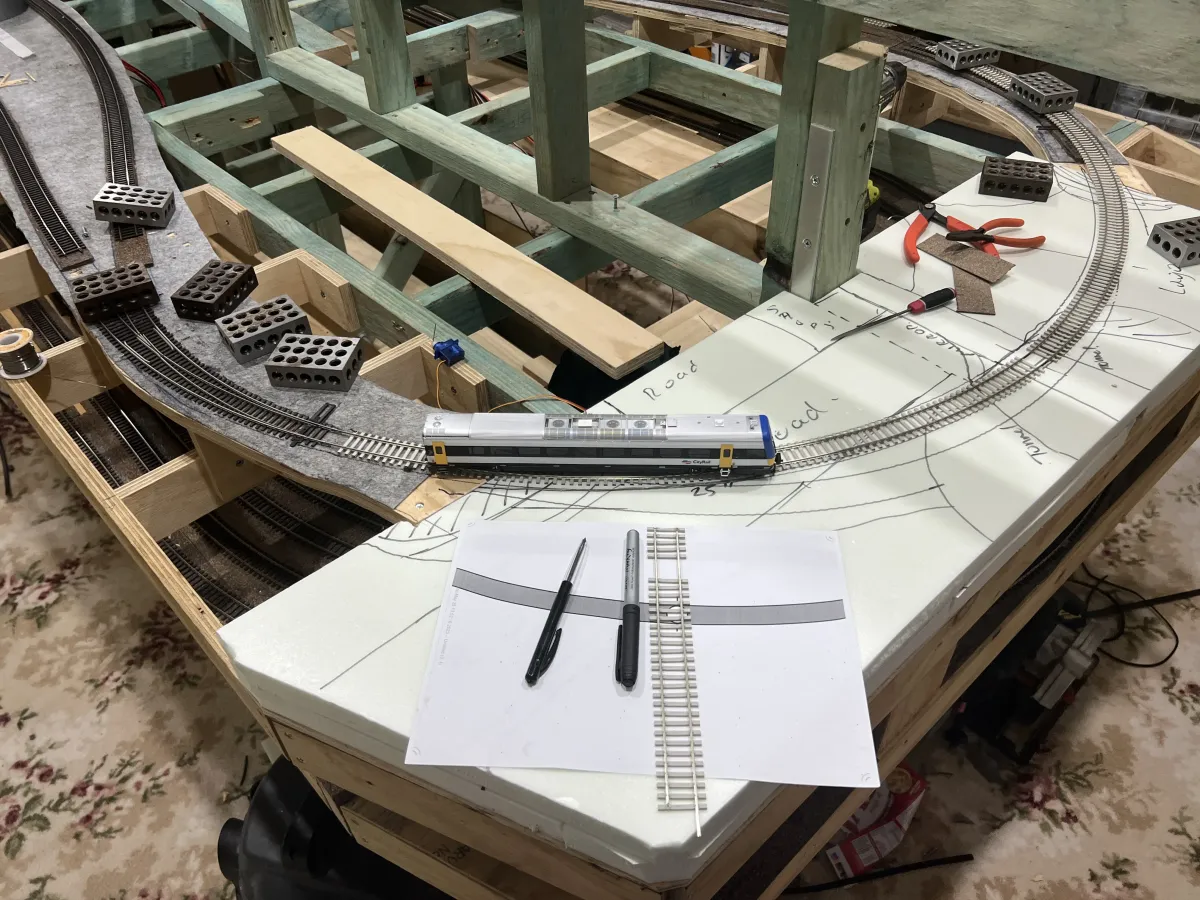
Track is now laid to the future site of Berry. I'm planning to build some #6 points for Berry so at the moment trackwork will stop here for a little bit until I get that sorted.
My focus now is turning to the last of the benchwork for the centre peninsula. Am hoping to complete this by the end of next month.
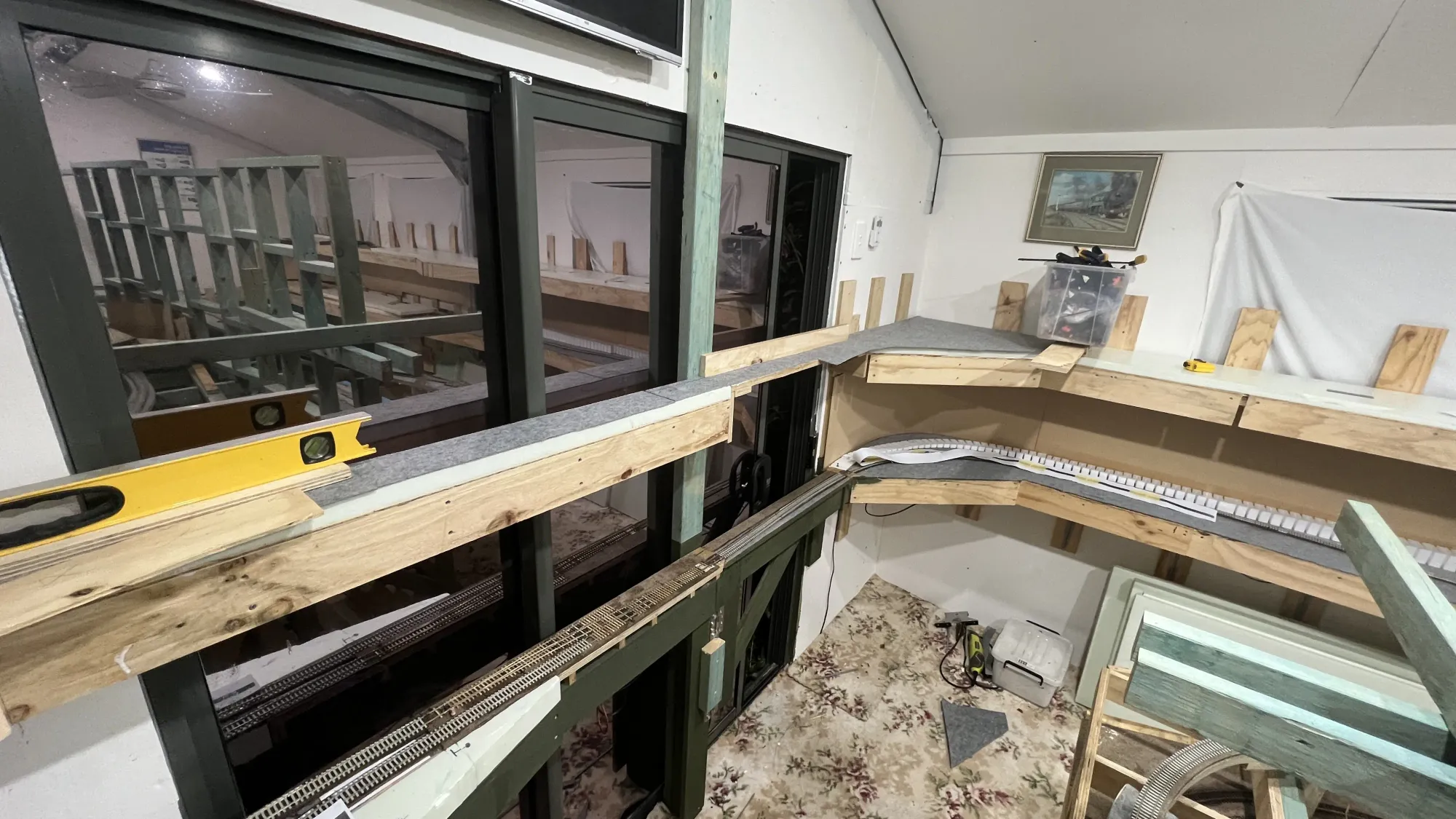
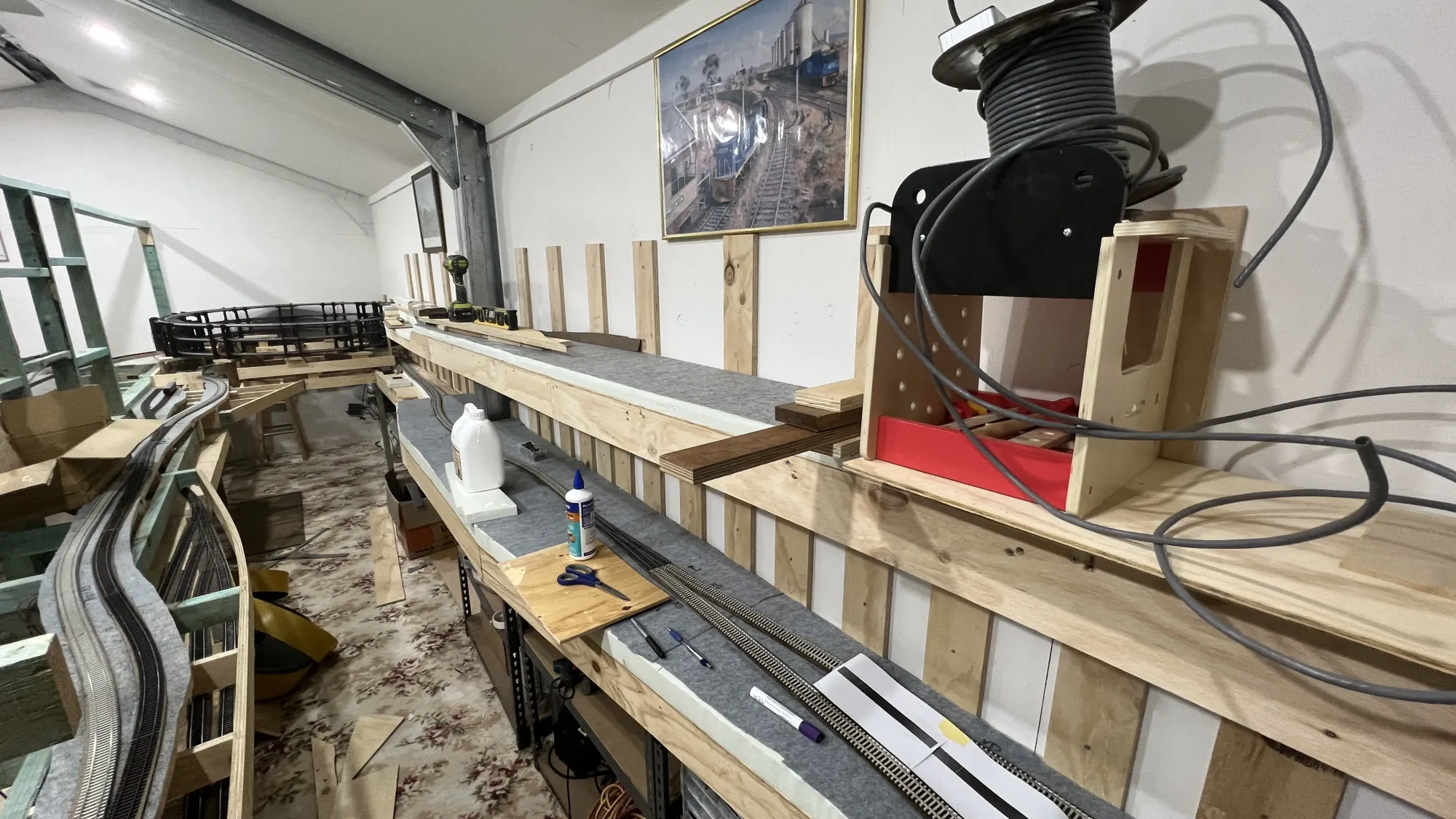
I did a couple of things differently laying track on the second level. I superelevated the track with masking tape rather than styrene, and I used ethernet cable for the track droppers. I prefer ethernet cable as I can drop it straight below the rail without drilling down the centre of the track (so its easier to hide), and being a single-core wire it holds its shape when fed to the terminal blocks underneath.
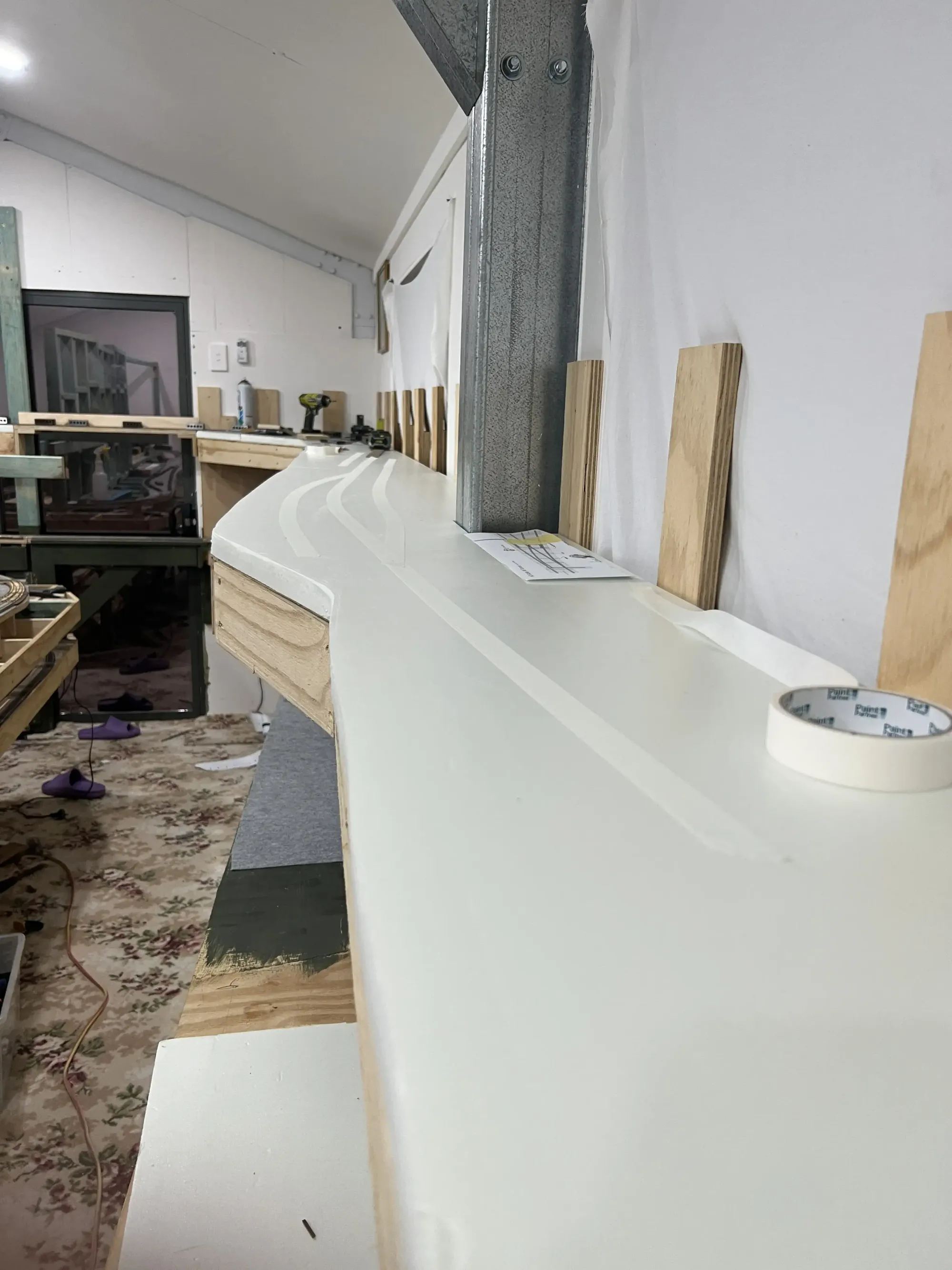
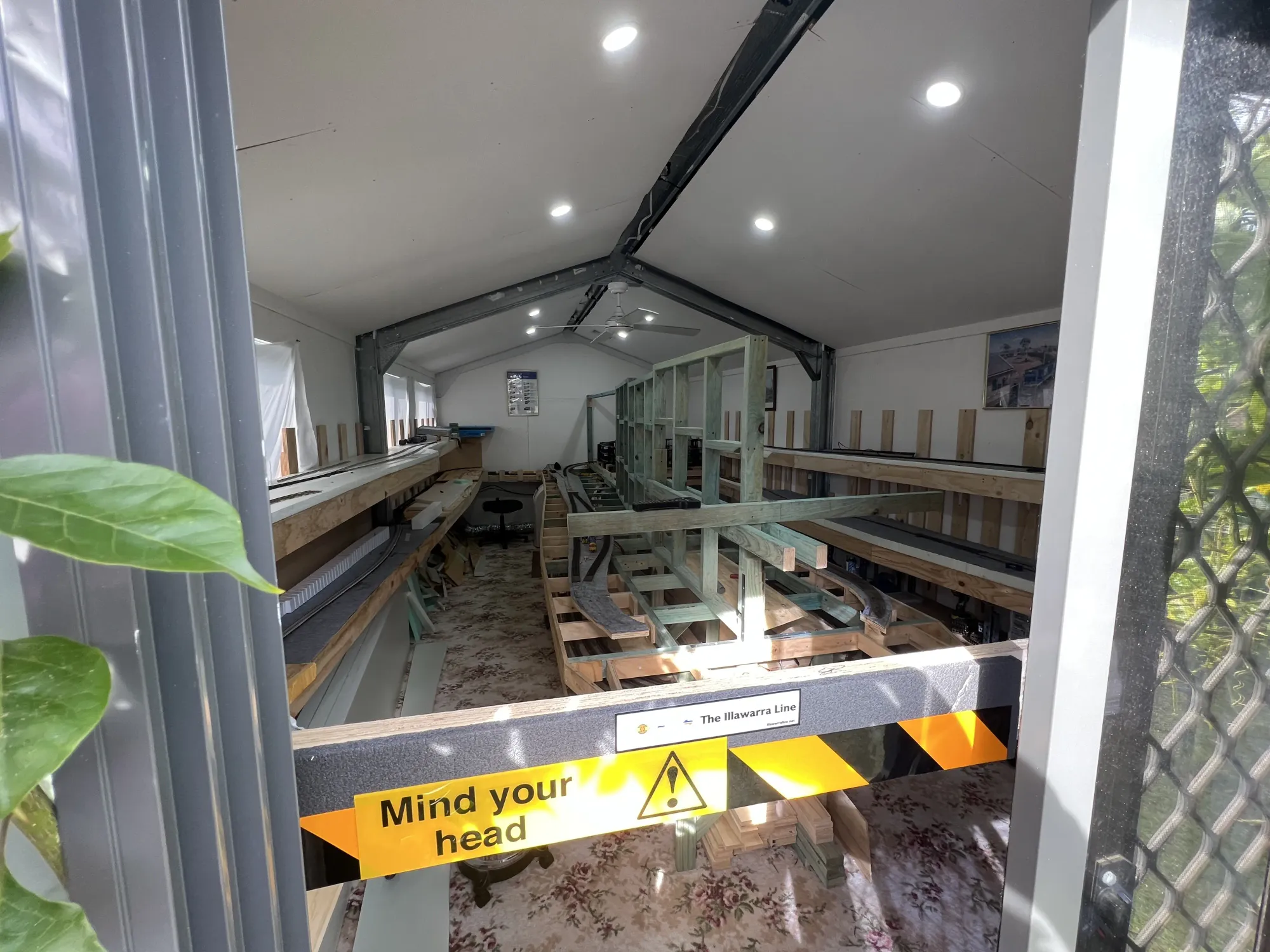
Managed to also run some trains with a couple of guys from a local group one evening this month and had a few issues popup:
- CATS Freezing and knocking the whole WiThrottle network offline
- Loss of state for points between the layout and CATS whenever CATS is restarted.
- Rebooting of certain ESPs causes the others to also glitch out
- Derailments on the curved points near Kiama.
I'd say it ran worse than the last time earlier this year, but its a good opportunity to figure out what causes the faults, and what can be put in place to stop these things occuring again.
CATS Freezing / Loss of Point Status
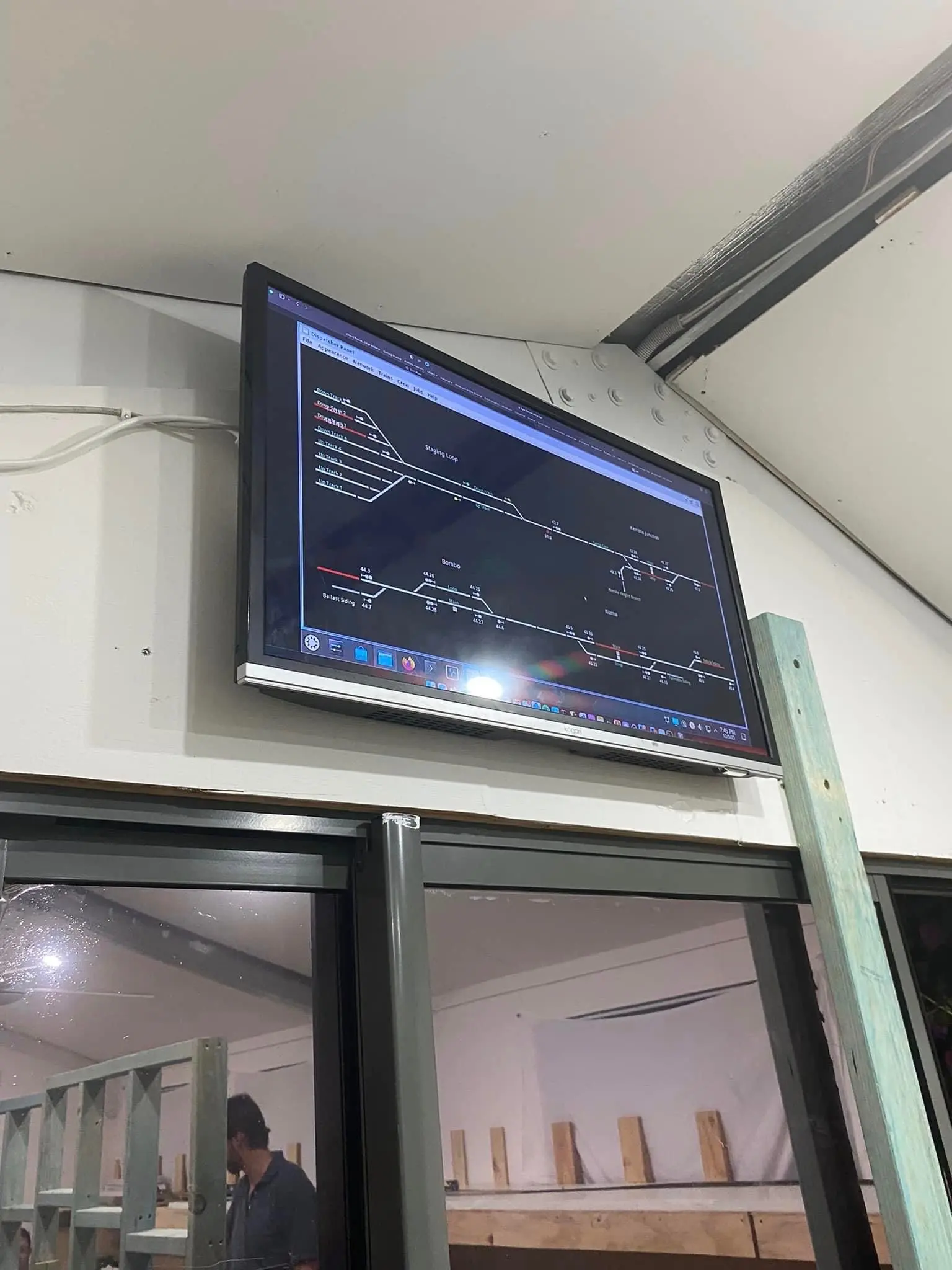
CATS freezing itself wasn't a big deal, but the downstream impacts were. Whenever CATS restarts it takes WiThrottle out, so we had a couple of control loss events which required a reboot of the Command Station.
To mitigate this, I now run two seperate instances of JMRI on the layout PC - one for CATS connected to MQTT, and one for WiThrottle connected to NCE via COM. So if CATS dies, it doesn't impact train control. This aligns to what i've done for the rest of the network, seperating train control from field equipment control. I think this is one of those scenarios that pops up when you actaully run trains, so I'm looking forward to doing more of that once the last of the track is complete to iron out more faults.
I've also made some changes to the CATS panel to define an MQTT topic for when a point is open/closed. This required a minor change to the ESPHome code, so now once a point is thrown the ESP publishes a state message as well. Now when CATS is restarted, it pulls the latest status message down from MQTT so is always in sync. When you now throw a point in CATS, its status will not change until the ESP reports the servo has moved.
ESPs rebooting/glitching out other ESPs on the network
This I think is an issue with inrush current from the servos. I've had a similar thing occur on my shelf layout when removed all my TAM Valley singlets. When 4+ servos come online at once, this spike in current either 1) causes a brownout of ESPs triggering a reboot, or 2) causes the servos on different boards to glitch out completely.

So the scenario was: I adjusted some servo endpoints at Kiama, reflashed the ESP (which triggered a reboot). The 4 servos on the Kiama ESP caused a current spike, and the whole network had a melt down requiring the whole circuit to be switched off and on. In addition CATS is know out of sync with the layout out since all points are normalised on ESP boot.
I'm mitigating this by running two seperate power buses. 6.5v for ESP, 5v for servos. I've replaced the original bus wire with 4 core wire so there hasn't been a need to run an additional cable. My original plan was to get power off the DCC bus for the servos, but if the layout shorts, point control would be lost. I've made an effort to keep this seperate so far so introducing this dependency wouldn't be a good idea. The code change to CATS/ESPHome mentioned earlier ensures the point status is always in sync.

I also got sick of having to re-flash the ESPs every time I updated the servo endpoints. So i've modified the ESPHome code to allow real-time updates without any further flashing required - 1000x easier!

Derailments at Kiama
I asked a few of the guys to bring some long-wheelbase/temperamental locomotives to try and help shake down the track and pickup any faults.
The curved points at the end of the peninsula gave me grief with a Eureka Garratt. I had some issues with an endeavour previously, which I fixed by allowing some more sideplay in the bogies (as they have next to none)
After some back and forth testing we found a twist in the rail on a curved point that on certain locos would caused wheels to ride up and derail. On the layout you could see a slight rise in one side of the track, but after removing the track and desoldering, you could really see it:
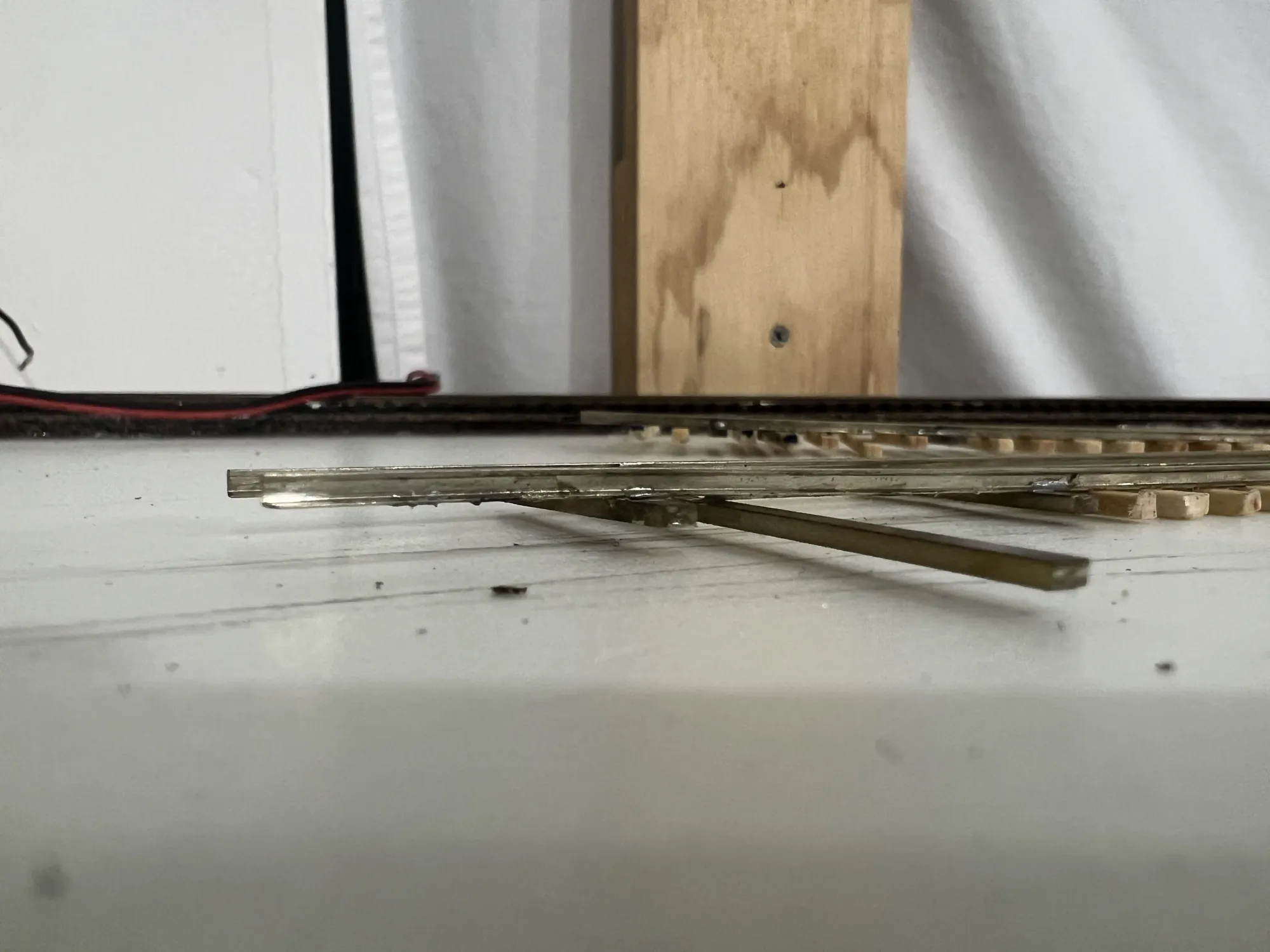
I was lazy when i first laid this track, thinking that glueing it down would mitigate this since it would be forced level. In addition there was a minor kink in the curve that caused it to be that little bit too tight.
So I'm going for attempt 3 of this curve, rather than hand lay these points I'm going with some Walthers 28"/24" points. The irony of this being I looked at these points, discounted them as being too large, and went for a fast track 24"/21" fixture (which ended up being too small).
Staring down the prospect of building them again, I remembered that Walthers make the same size point! Roundabout way to get there but I hope this is the last time I do this piece of track.
I'll be putting in more effort this time to level the track, superelevate it and make sure there are no twists and the curve (which will be kept at 25") is smooth.
As much as I didn't want to, relaying this track does have additional benefits.
I've replaced the plywood benchwork with foam, which will be carved out to form the intersection near the station, and the curved bridge over the main road. Carving the foam out under the roadbed is a lot easier than trying to cut the plywood roadbed out when time comes to install the bridge.

Translating this to the layout, the bridge will sit roughly where that Endeavour is now in the image below, and the T section will head up along the track towards the upper left. A small tunnel will be used to split the scene in two between Kiama and Bombo.
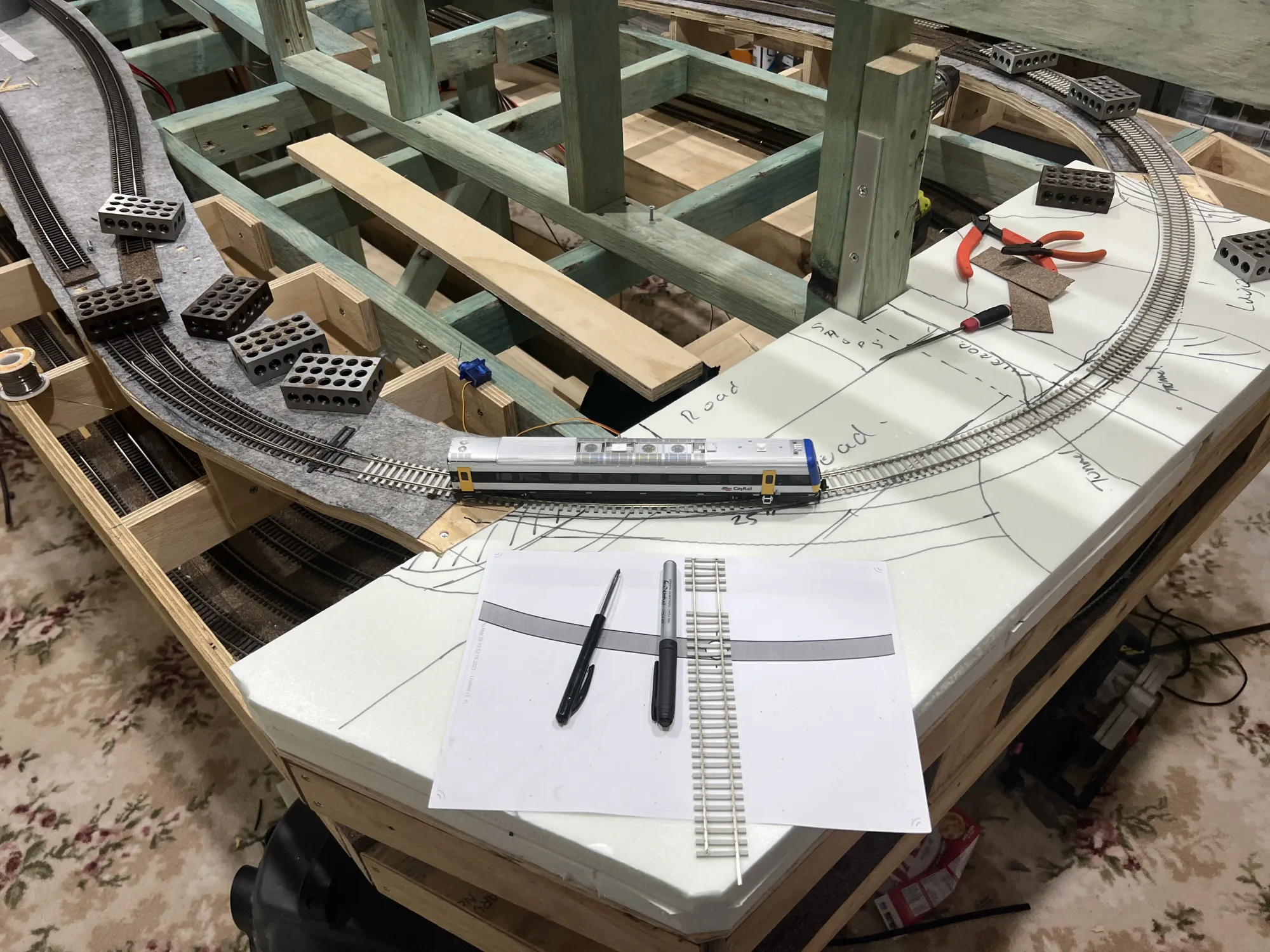
I think that'll do for now, a couple of setbacks but an oppurtunity to also make things better by doing it a second (and sometimes) third time. Am looking forward to finally being finished with benchwork, the end is in sight.
